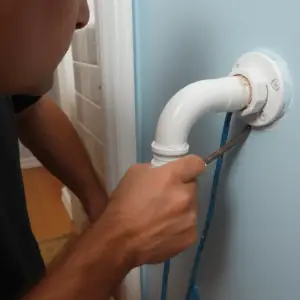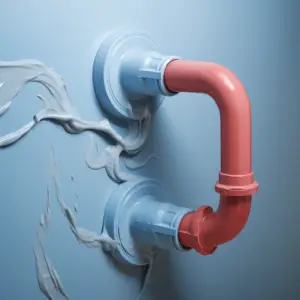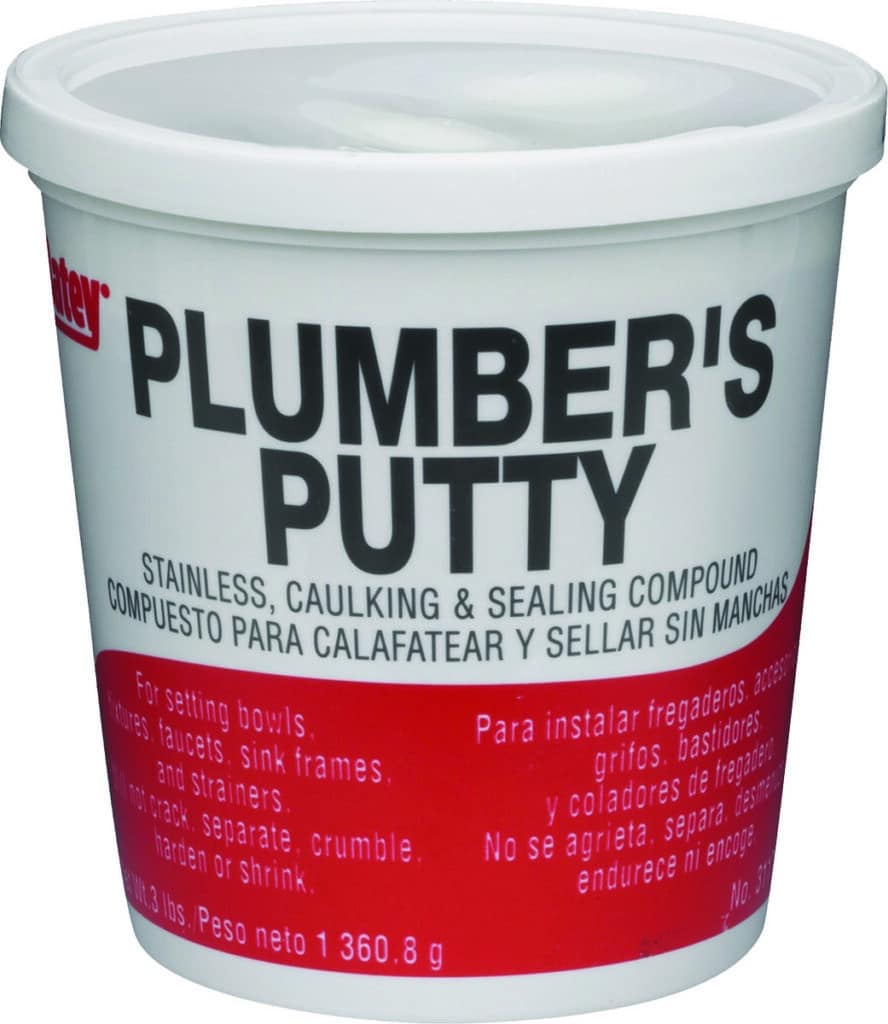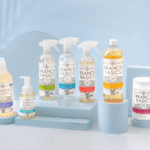Plumbers putty is the substance you need to stop or prevent leaks around your faucet, sink, or tub drains. Plumbers putty is a go-to sealant for experts, homeowners, and DIY-ers. This simple-to-use device will keep your fixtures leak-free by preventing water from flowing between two stiff surfaces.
Plumbers putty is a flexible, clay-like substance that seals off the area underneath a flange to stop water from leaking through. The item is perfect for installing sink basket strainers, pop-up drains, and showerheads. Once put, it is simple to wash away and won’t be visible from the exterior of the plumbing fitting.
Unlike other sealants, a plumber’s putty keeps its flexibility after application and can be easily modified. Since plumber’s putty is oil-based, it can discolor porous materials, including granite, quartz, marble, and sandstone. Use a stain-free plumber’s putty for application on these surfaces because it is oil-free and won’t stain the porous material.
Table of Contents
Can You Use Plumbers Putty on PVC?

You may hear that plumber’s putty is the ideal material to use for sealing pipes. It not only keeps its flexibility over time, but it also effectively fills more gaps than caulk would. However, there are instances when it is advisable to avoid using a plumber’s putty.
When using PVC pipes is one of these occasions. Plumber’s putty shouldn’t be applied to plastic since it is produced with petroleum oil, which over time, erodes PVC. Leakage will result from any damage to the piping’s structural integrity.
According to plumbers, even the most rigid plastics can become fragile when exposed to a plumber’s putty.
When Else is it Not Advisable to Use a Plumber’s Putty?
Some individuals might think of plumber’s putty as the duct tape of the plumbing industry—a wonderful all-purpose fix-all. But that isn’t the case. Below are some instances when the use of plumber’s putty is discouraged.
When Fixing a Bathroom Sink to a Wall
Never utilize plumber putty to fix the back of your bathroom sink to the wall. The putty will not dry, so it can’t ever give you the reliable seal you need.
Use silicone-based caulk as an alternative.
In Conspicuous Areas
Plumbers’ putty should never be used in conspicuous areas. As the coloring ages, it may turn yellow and make your finished product unpleasant.
When Threading
Never thread with plumber’s putty. Plumber’s tape, commonly known as Teflon tape, should be used on threaded pipes since it will correctly establish a watertight seal you cannot get with mailable putty.
The purpose of this tape is to ensure good threading adhesion between pipes. Additionally, it can be applied to metal and plastic pipes that are subjected to high pressure, such as drain pipes.
When Joining Pipes
Never join pipes with a plumber’s putty. As indicated earlier, plumber’s putty never completely dries out; thus, it won’t offer the necessary adhesive strength when joining two pipes.
If you try to join pipes with a plumber’s putty, the weight of the pipes will eventually cause the putty to separate.
Underwater
Avoid using plumber’s putty underwater. Despite how fantastic this product is, it won’t stick to a surface underwater. Keep in mind how water-resistant the putty is.
In other words, the putty won’t adhere correctly if there is moisture between it and the surface it is supposed to attach to.
On porous Surfaces
The use of plumber’s putty while working with marble, granite, or other porous stones is strongly discouraged. The petroleum oil we already mentioned is the cause of this.
Petroleum oil will gradually seep into the porous stone, staining a brown or yellow hue on these surfaces. However, there are water-based plumber’s putty varieties that are specifically created to function with stainless steel and porous stone goods.
What Can You Use Instead of Plumber’s Putty?

Plumbers use silicone caulk rather frequently these days. In addition to maintaining everything’s water tightness, it also has strong adhesive properties that a plumber’s putty lacks. Like a plumber’s putty, silicone caulk doesn’t crack over time and maintains flexibility.
Most brand-new drains come with a rubber gasket that may be utilized under the flange in place of the plumber’s putty. However, given that the flange can deteriorate with time and need replacing, some plumbers still favor using plumber’s putty in addition to the rubber gasket.
The ideal method for joining plastic pipes is using the PVC primer. Typical ingredients for this primer are acetone and cyclohexanone.
The outside shine of the pipe will be removed by the acetone or tetrahydrofuran in the PVC primer, leaving a rough appearance that is ideal for making PVC glue adhere. The tight bond that results from doing this will increase the lifespan of your plumbing.
Plumber’s putty can be replaced with other adhesive products like tub caulk or marine adhesive. Typically, these products are packaged in squeeze tubes for simple application. These solutions might work better to control leaks, cover noticeable blemishes, or join plastic to other surfaces. To choose the one that will be most useful for your project, make sure to read the back of every product.
Frequently Asked Questions
What Differentiates Siliconized Caulk from Plumber’s Putty?
Once it is dry, a siliconized caulk’s potent sealing abilities offer improved water resistance and flexibility. Unlike plumber’s putty, siliconized caulk is an adhesive, and after it has dried, it cannot be reshaped or replaced. Because it is waterproof and UV-resistant, siliconized caulk can also be utilized in applications where weatherproofing is necessary.
How Can a Leaky Pipe be Sealed?
Use epoxy putty or pipe putty as a temporary remedy for a leaky pipe. Pipe putty is designed to harden at room temperature and can seal the hole or crack on a pipe.
Does Flex Seal Work on PVC pipe?
For PVC pipes, Flex Seal Liquid works well.
Conclusion: Can You Use Plumber’s Putty on PVC
The plumber’s putty should not be used on PVC. This is because the product contains petroleum that will corrode the pipes over time. If you use PVC pipes, try the alternatives to the plumber’s putty mentioned in this article.


